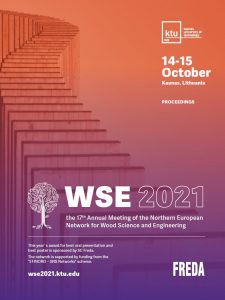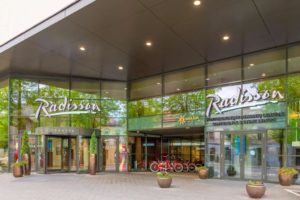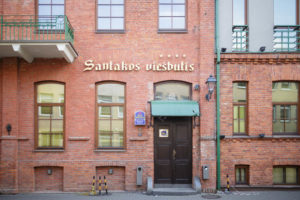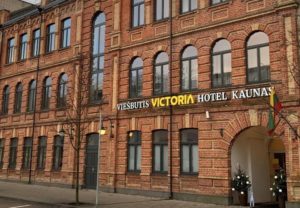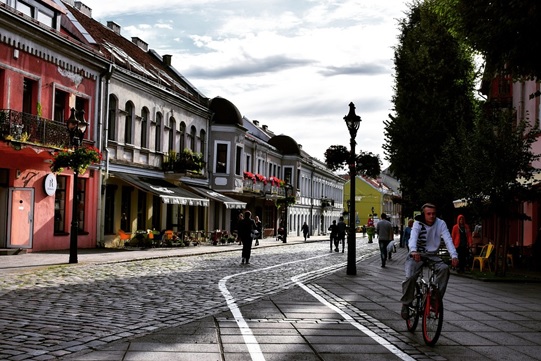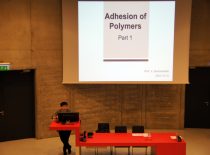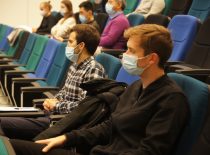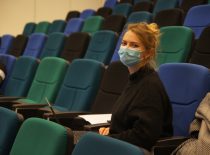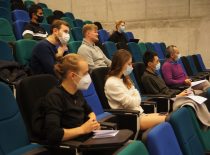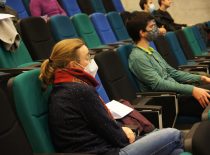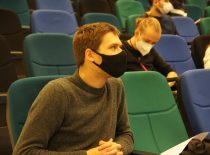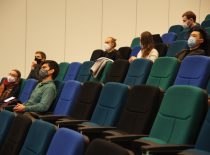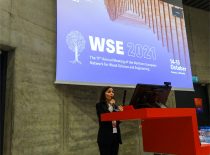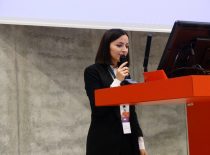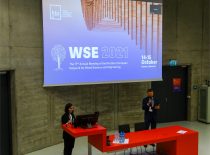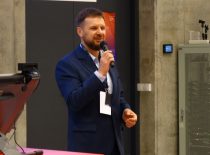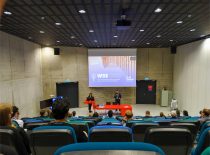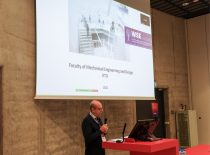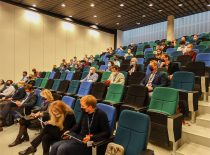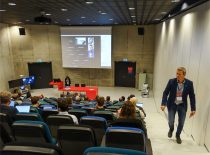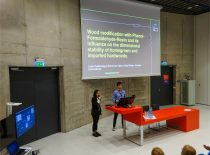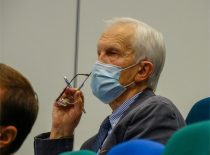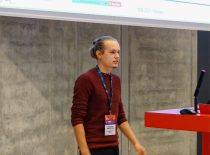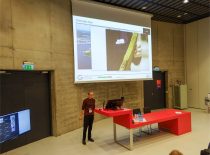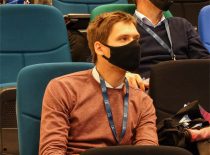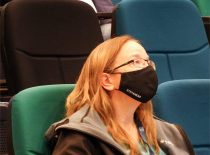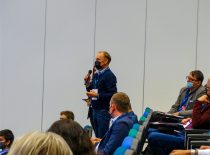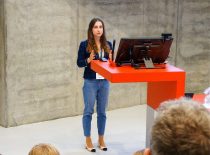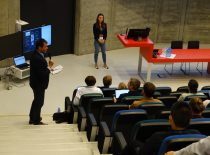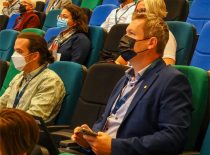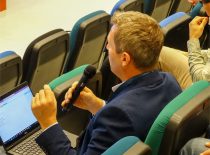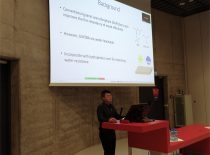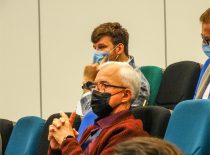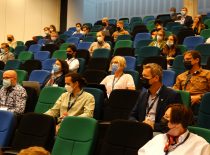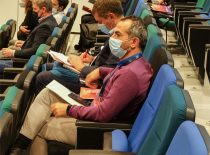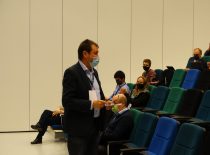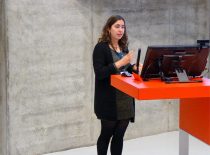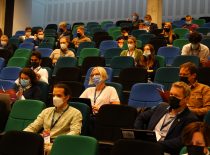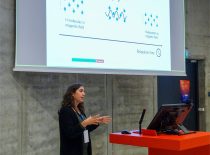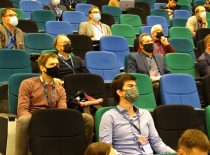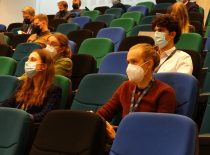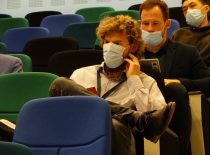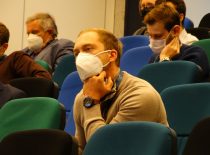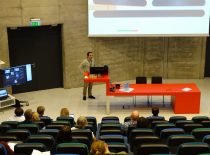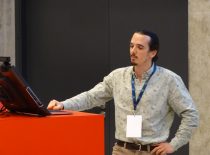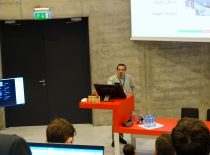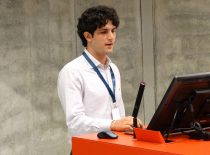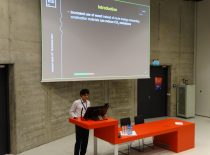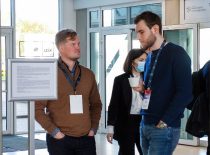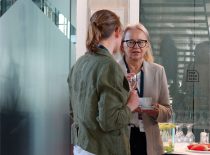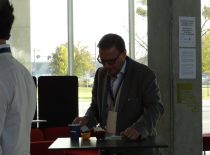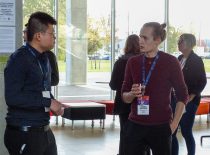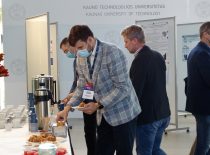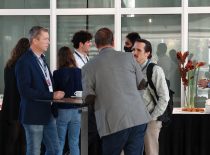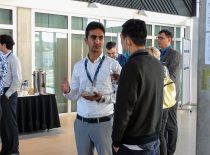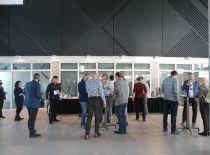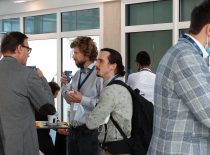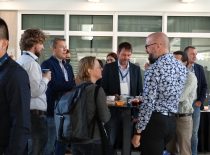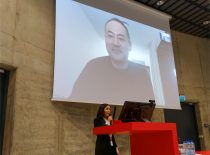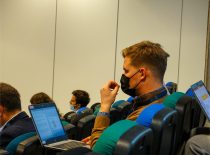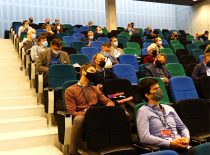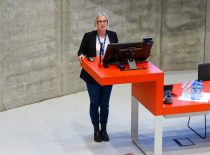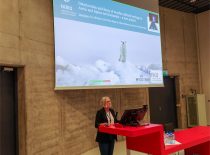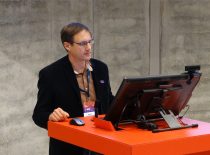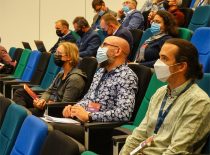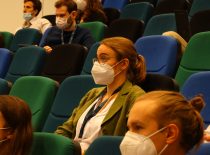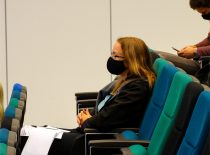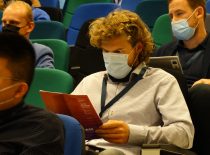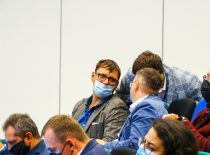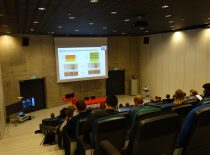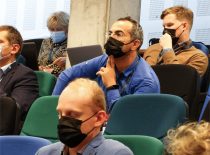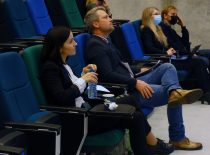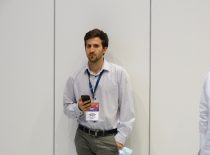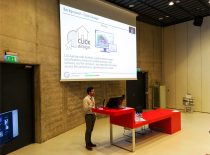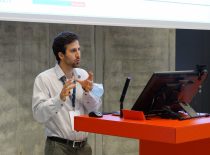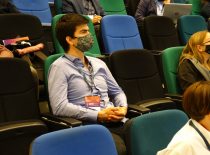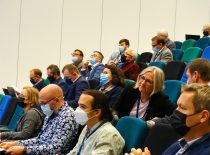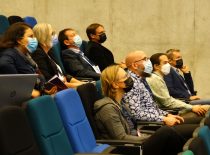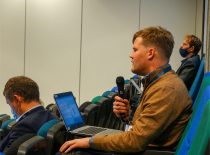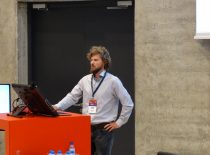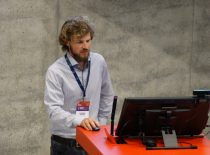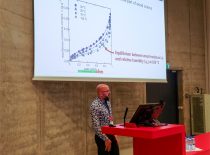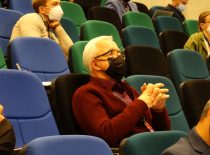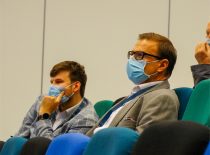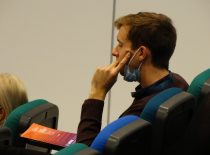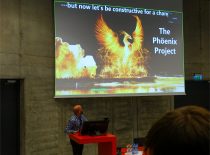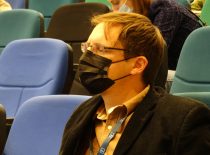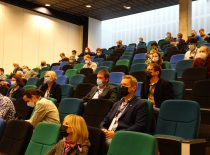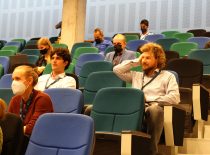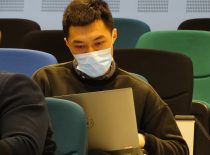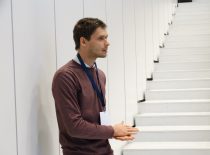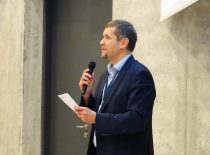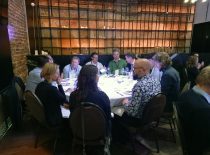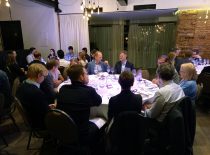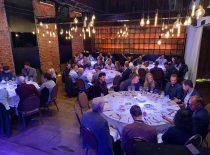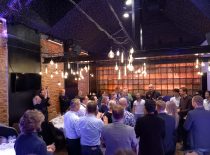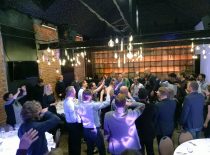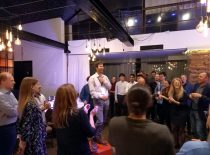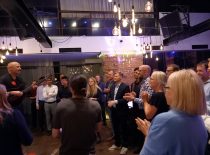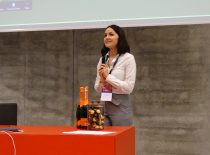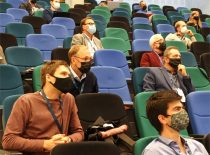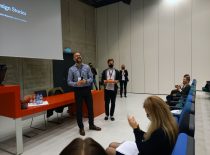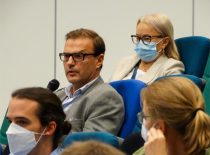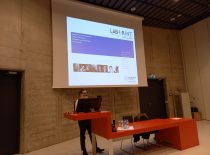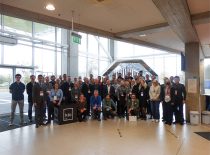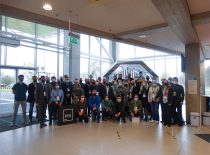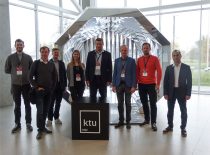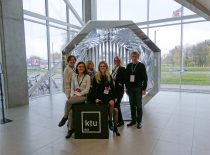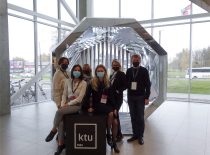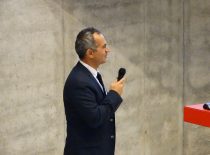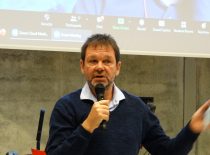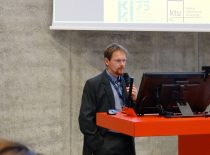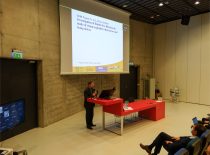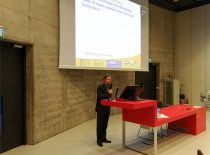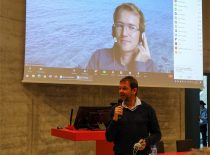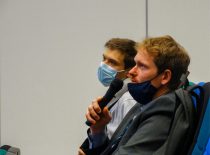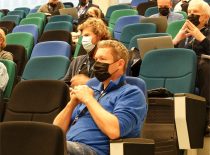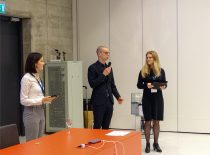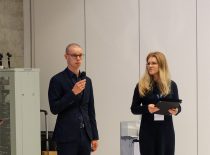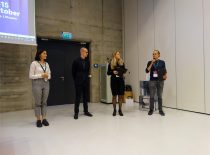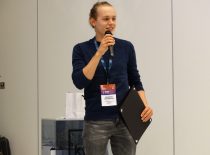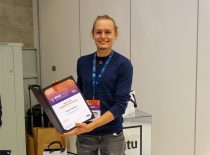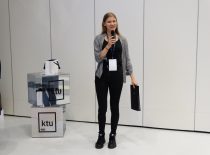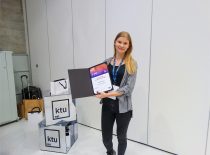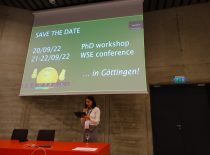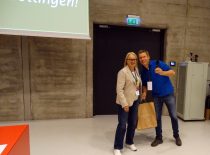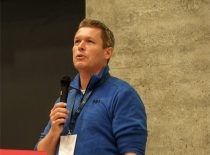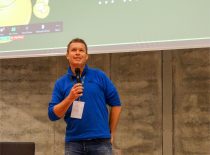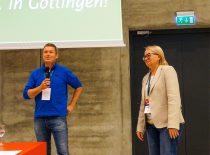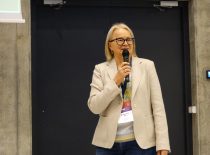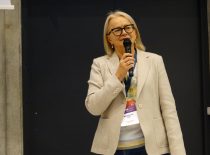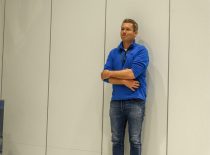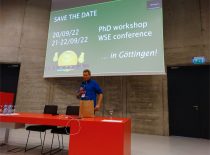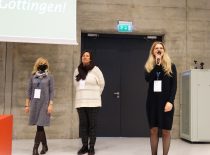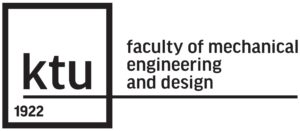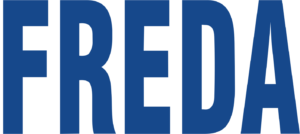| 08:00-09:00 |
Registration + morning coffee |
| 09:00-09:20 |
Opening
Andrius Vilkauskas, Dean of Mechanical Engineering and Design Faculty
Laurencas Raslavičius, Vice-Dean for Research |
| 09:20-10:45 |
Oral session 1 |
| (S) |
Carlo Kupfernagel, Morwenna Spear, Andy Pitman, Graham Ormondroyd
Wood modification with phenol-formaldehyde-resin and its influence on the dimensional stability of homegrown and imported hardwoods |
| (S) |
Johannes Karthäuser, Vladimirs Biziks, Holm Frauendorf, Holger Militz
Vacuum, low-temperature, microwave-assisted pyrolysis of various technical lignins |
| (S) |
Katarzyna Kurkowiak, Aaron Kilian Mayer, Lukas Emmerich, Holger Militz
Initial quality control trials of sorbitol and citric acid (SorCA) modified wood |
| (S) |
Chia-feng Lin, Chi Zhang, Olov Karlsson, George I. Mantanis, Dennis Jones, Dick Sandberg
Weathering influence on fire-retardant resin treated thermally modified Scots pine wood |
|
Liselotte De Ligne, Maria Fredriksson, Emil Engelund Thybring
Impact of thermal treatment processes on wood-water interactions |
| (S) |
Alexander Scharf, Benedikt Neyses, Dick Sandberg
Continuous densification of solid wood – the belt press approach |
|
Andrea Ponzecchi, Sara Piqueras Solsona, Emil Engelund Thybring, Maria Fredriksson, Ramunas Digaitis, Lisbeth Garbrecht Thygesen
Raman microspectroscopy of native and acetylated wood at different relative humidities using a tailored moisture chamber |
| 10:45 – 11:10 |
Coffee break |
| 11:10 – 11:35 |
Keynote lecture 1 |
| 11:35 – 13:00 |
Oral session 2 |
|
Ulrich Hundhausen, Oscar Van Doorne
A comparison between the ultrasonic, wedge cut and microscopic method for the measurement of the dry-film thickness of wood coatings |
| (S) |
Vinay Kumar, Aayush Jaiswal, Alexey Khakalo, Marie Gestranius, Heli Kangas, Tekla Tammelin
Phosphorylated microfibrillated cellulose based eco-friendly fire-retardant coatings for wood |
|
Ramūnas Digaitis, Emil E. Thybring, Lisbeth G. Thygesen, Maria Fredriksson
Targeted acetylation of wood: a tool for tuning wood-water interactions |
|
Lone Ross, Gry Alfredsen, Atle Wehn Hegnes, Johan Mattsson, Anne Cathrine Flyen
Deterioration and decay of wooden cultural heritage in Arctic and Alpine environments – a new project |
| (S) |
Philip Bester Van Niekerk, Christian Brischke, Joshua Jannik Rabke, Christian Simmering, Jan Miguel Tausendfreund
Evaluation of splash water contact scenarios on wooden cladding and its influence on the moisture-induced risk of decay |
|
Emil Thybring, Charles R. Boardman, Samuel L. Zelinka, Samuel V. Glass
Reality check on sorption isotherm models: Do they really describe the wood-water equilibrium state? |
| 13:00-14:15 |
Lunch |
| 14:15-15:00 |
Poster session |
| (S) |
Dace Cirule, Edgars Kuka, Melita Hivrica
Discolouration of wood due to artificial lighting |
|
Maija Kymäläinen
Natural weathering of surface charred spruce – comparison of two techniques |
| (S) |
Brendan Nicholas Marais, Philip Bester van Niekerk, Jonas Niklewski, Christian Brischke, Holger Militz
Mapping the present and future fungal decay hazard of aboveground wood in Europe |
|
Petr Čermák, Jakub Dömény, Petr Pařil, Radim Rousek, Dominik Hess, Jan Baar
Wood-water interactions of thermally modified, acetylated and MF resin modified beech wood |
|
Christoph Munk, Hauke Wohlert, Alexander Pfriem
Investigation of the influence of two different thermal treatment processes on the change of various material properties of spruce resonance wood (Picea abies (L.) KARST.) |
| (S) |
Alexander Scharf, Injeong Kim, Benedikt Neyses, Dick Sandberg
Wood densification by sodium hypophosphite impregnation and mechanical compression |
| (S) |
Lina Beniušienė, Marius Aleinikovas
Influence of growth conditions on some stem and branch parameters on Norway spruce plantations |
| (S) |
Catherine Kilumets, Heikko Kallakas, Jaan Kers, Andres Krumme
The influence of temperature in compression molding on the mechanical characteristics of cellulose diacetate |
|
Austra Zuševica, Didzis Elferts, Iluta Dauškane, Roberts Matisons, Gunta Kalvāne, Dagnija Lazdiņa
Relationship between phenological phases and wood anatomic parameters of silver birch |
|
Roja Modaresi, Andreas Stenstad, Stine Lønbro Bertelsen
Evaluating use of the secondary timber in Cross Laminated Timber production (CLT) |
|
Benas Šilinskas, Marius Aleinikovas, Mindaugas Škėma, Lina Beniušienė
Dynamic MOE of small-leaved lime (Tilia Cordata Mill.) in urban area |
| 15:00-15:20 |
Coffee break |
| 15:20-17:00 |
Oral session 3 |
|
Taivo Leesment, Regino Kask, Jörgen Dobris
Durability of the printed surface in the sauna environment |
|
Christian Brischke, Susanne Bollmus, Marco Braun, Lukas Emmerich
Foil storage for conservation of beetle-infested spruce logs – a feasibility study |
|
Erik Larnøy, Johan Biørnstad, Andreas Treu
Advances in CIOL-protected wood – the road towards commercialization |
| (S) |
Edgars Kuka, Dace Cirule, Ingeborga Andersone, Bruno Andersons
Finding the optimal one-component adhesive for curved and impregnated glued wood products for outdoor use |
|
Anti Rohumaa, Natalja Savest, Anthony Chijioke Maduagwu, Heikko Kallakas, Jaan Kers
Effect of log soaking on colour of Estonian hardwoods |
|
Heikko Kallakas, Anti Rohumaa, Onyekachi Fortune Nwokocha, Jaan Kers
Effect of log soaking temperature on veneer strength and veneer lathe checks development |
| (S) |
Umair Qasim, Heikko Kallakas, Jaan Kers
Cellulosic ester based on the ionic liquid-assisted transesterification: substitution and mechanical analysis |
|
Morwenna Spear, Paul Mason, Geraint Williams, Chris Miles, Elen Williams, Andy Pitman, Roger Bailey, Tom Theobald, Subhasisa Nath, David Waugh, Graham Ormondroyd
Demonstrating the suitability of laser incision for timber treatment technologies |
| 18:30-23:00 |
Conference dinner |


